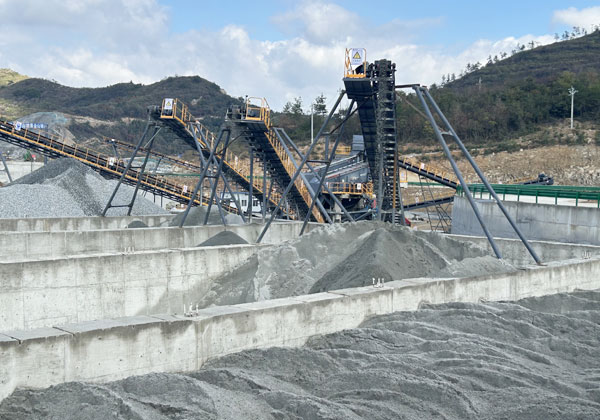A high-quality aggregate screening plant plays a crucial role in the production of aggregate materials used in construction, mining, and other industrial applications. The plant is designed to separate different sizes of materials, such as crushed stone, sand, and gravel, to meet specific quality and size requirements for various projects. This article will explore the key components, features, and benefits of a high-quality aggregate screening plant.

Key Components of an Aggregate Screening Plant
- Feeding System: The feeding system is the starting point of the screening process. It consists of feeders like vibrating feeders or belt conveyors that introduce the raw material into the plant. These feeders help ensure a consistent flow of material, preventing blockages and reducing the likelihood of downtime.
- Screening Unit: The screening unit is the core of the plant. It consists of one or more vibrating screens that separate aggregates based on size. These screens can be made of different materials like wire mesh or polyurethane, depending on the material’s abrasiveness. The screens are typically configured with multiple decks to separate the materials into several different grades. The size of the mesh or aperture determines the separation efficiency and the quality of the final product.
- Material Handling and Conveying Systems: Once the material is screened, conveyors are used to transport the separated products to stockpiles, crushers, or other parts of the plant. These conveyors are critical for maintaining an efficient workflow and ensuring that the screened aggregates are directed to the appropriate destinations.
- Washing System (Optional): In some cases, aggregates need to be washed to remove dust, clay, and other impurities. A washing system, such as a log washer or a rotary scrubber, may be integrated into the screening plant. This system ensures that the final products are of high quality and meet industry standards for cleanliness and appearance.
- Control System: The control system is responsible for the operation and monitoring of the entire plant. It typically includes automated functions to adjust screen speed, material flow rates, and other parameters for optimal performance. Modern aggregate screening plants come with digital controls and remote monitoring systems to enhance operational efficiency and reduce human error.
Features of a High-Quality Aggregate Screening Plant
- Efficient Separation: A well-designed screening plant ensures precise separation of aggregates by size, leading to high-quality end products that meet the desired specifications.
- Durability: High-quality aggregate screening plants are built to withstand harsh working environments, such as exposure to dust, vibration, and heavy materials. They are constructed using high-strength materials, including steel and durable screen surfaces that can resist wear and tear.
- Versatility: A good screening plant should be versatile enough to handle various types of materials, including fine sand, coarse gravel, or larger stones. Modular designs allow for flexibility and easy adaptation to different screening needs.
Benefits of a High-Quality Aggregate Screening Plant
- Enhanced Product Quality: The primary benefit of a high-quality screening plant is the production of high-grade aggregates. By accurately sorting materials into different sizes, the plant ensures that each product meets the necessary specifications for construction projects, road building, or concrete production.
- Increased Productivity: Efficient screening processes improve productivity by minimizing material handling times, reducing downtime, and maximizing throughput. The use of automated systems ensures that the plant operates continuously with minimal human intervention.
- Cost Savings: By optimizing material use and minimizing waste, aggregate screening plants help reduce overall costs. Additionally, energy-efficient components and reduced wear on screens and other equipment contribute to long-term savings.
A high-quality aggregate screening plant is an essential investment for businesses involved in the production of aggregates. It enhances the quality, efficiency, and cost-effectiveness of the screening process while meeting the demands of various industries. By focusing on durability, efficiency, and versatility, a well-designed screening plant can provide long-term benefits, improving product quality, operational productivity, and environmental sustainability.
